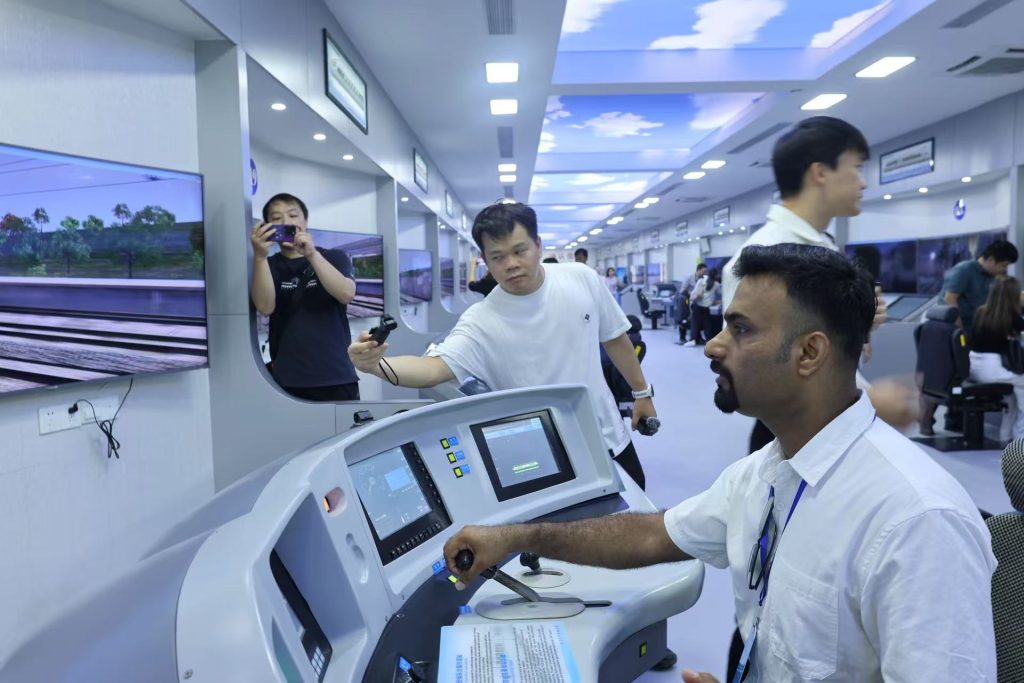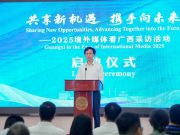(Singapore, 2025.08.30) China has helped Laos, Malaysia, and Indonesia to manage, operate, and maintain their new railways by teaching their trainees the key skills.
However, this initiative does not necessarily mean enforcing China’s railway standards as the knowledge imparted is ultimately transferred independently moving forward, said a Chinese railway expert.
“Our objective is to help our South-east Asia neighbors learn all the essential skills of running railways. Once they are skilled enough, they could adjust themselves to suit circumstances,” Qin Haibo, president of Liuzhou Railway Vocational Technical College, told the Fortune Times.
“However, all must be mindful at the same time that there are some internationally accepted standards that cannot be altered. One of these is the standard railway gauge widely used across the world. Most countries need to adopt it before they could connect their railways across borders,” he added.
Railway gauge refers to the distance between the inner sides of the two rails on a railway track. The most widely used is the 1.435 mm gauge, including by China. However, some railways, like those in Vietnam, use a narrower gauge, meaning they would not fit with China’s if they were to connect.

Vietnam has been discussing with China regarding building, improving, or modernizing three of its railways with a view to connecting them to China’s.
So far words have not turned into action. On the other hand, China had completed a railway for Laos, linking it with its city Kunming. It is also in the process of constructing a railway connecting the east and west coasts of Malaysia.
As for Indonesia, construction works by the Chinese have already started on several major projects, most notably the Jakarta-Bandung High-Speed Rail and Jakarta MRT.
Laos’ railway link to Kunming is especially significant as the stretch, if integrated into Southeast Asia’s regional network, would connect China to most Asean countries, including Singapore through Thailand and Malaysia.
The Liuzhou Railway Vocational Technical College, situated in Guangxi province’s major industrial city of Liuzhou, comes into play as the school which guides these countries in the running of their new railways by training their railway staff.
“Some countries fear China is planning to dominate the railway network of Southeast Asia by inserting itself into it, but that fear is unfounded,” Qin said in amusement. “For one thing, there are not many railway projects up for grabs in the region. Since they are scarce, it’s hard for China to execute the purported ‘plan’.”
On the other hand, given that China has built the largest railway network in the world both in terms of track length and infrastructure, it is natural that it wants to share its skills and experience, especially with its neighbors, the professor stressed.
Qin also pointed out that railway constructions usually take up to eight years to complete, during which time many things have moved forward. “By continuously training railway experts, we ensure there is always a fit and up-to-date team when duty begins.”
On whether China should advise countries to build railway links with its territory like what Laos has done, Qin remarked that decisions on this must come from the respective governments.
He also noted that some countries in Southeast Asia might not agree with building a railway network that integrates all.
“China cannot force the issue,” he said, noting that it is apparent though that such an all-connected railway network would catalyze the region’s economy and vastly benefit every country.
“Our trains, in particular the high-speed ones, are all manned and controlled by drivers because automated driving is dangerous,” Yan Rui, head of locomotive major at Liuzhou Railway Vocational Technical College explained when speaking to Fortune Times.
“We cannot depend on machines alone as they might make mistakes,“added Yan. “Our college is strong in AI but the stakes are too high if AI falters. Therefore, we must depend on human judgment. Anyway, we could turn to hybrid mode but that is used sparingly.”
Yan recounted the 2011 incident where one high-speed train crashed into another in Wenzhou.
Lightning strike had caused one of the train’s signaling systems to malfunction, forcing it to stop. Another train came by and collided onto it.
“This case prompted China to implement stricter safety regulations and upgrade the trains. China’s railway system is always learning from mistakes and plugging holes. Safety is always our paramount concern,” Yan pointed out.
Liuzhou Railway Vocational Technical College was founded in 1958. It primarily focuses on providing vocational education and technical training related to the railway industry. It is located in Liuzhou, an important transportation and manufacturing hub in southwest China.
The college features specialized training areas that mimic real-world railway stations and control centers. These provide students practical insights. In the past five years, the college has trained 247 students from Asean countries.





































